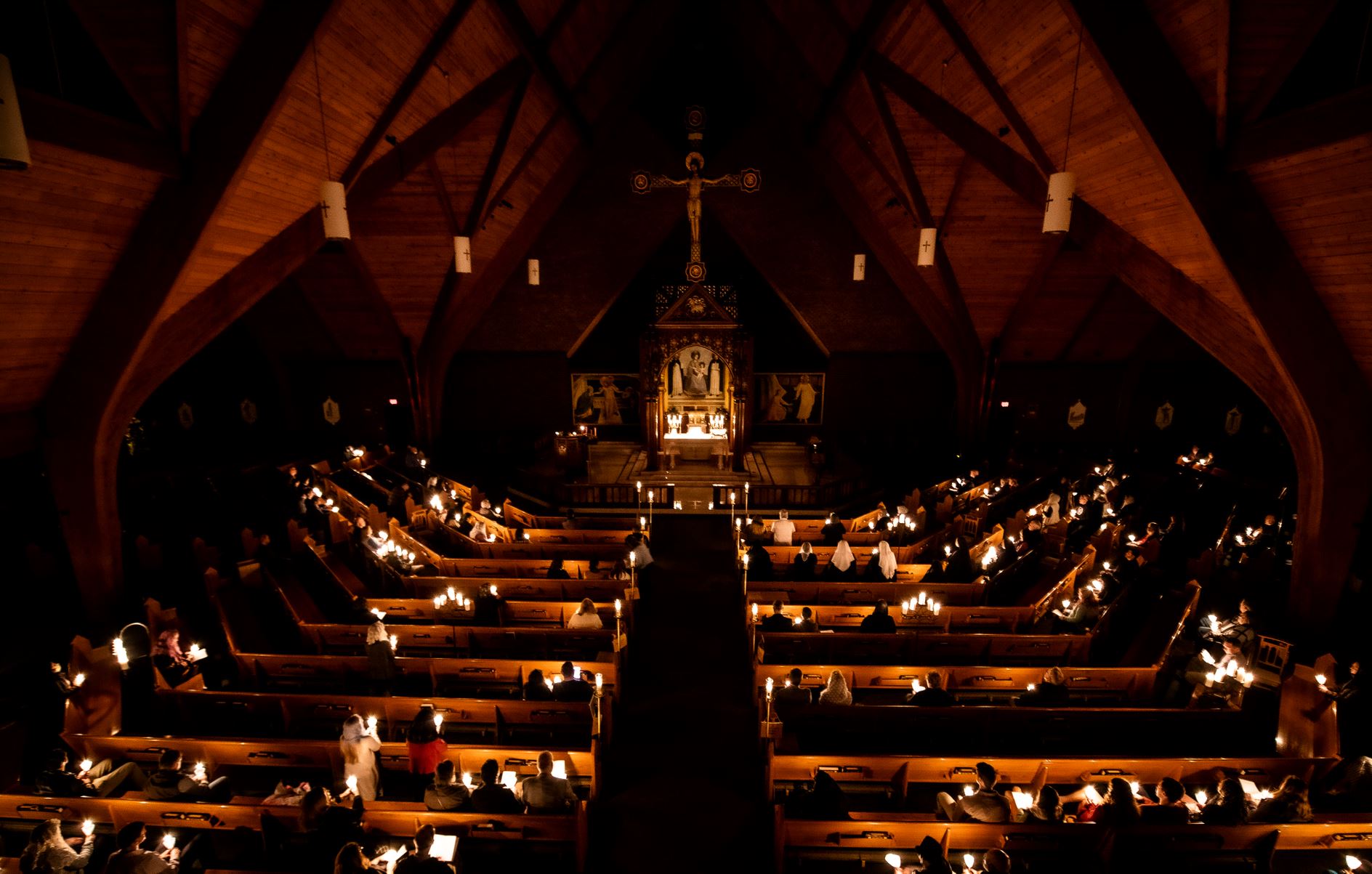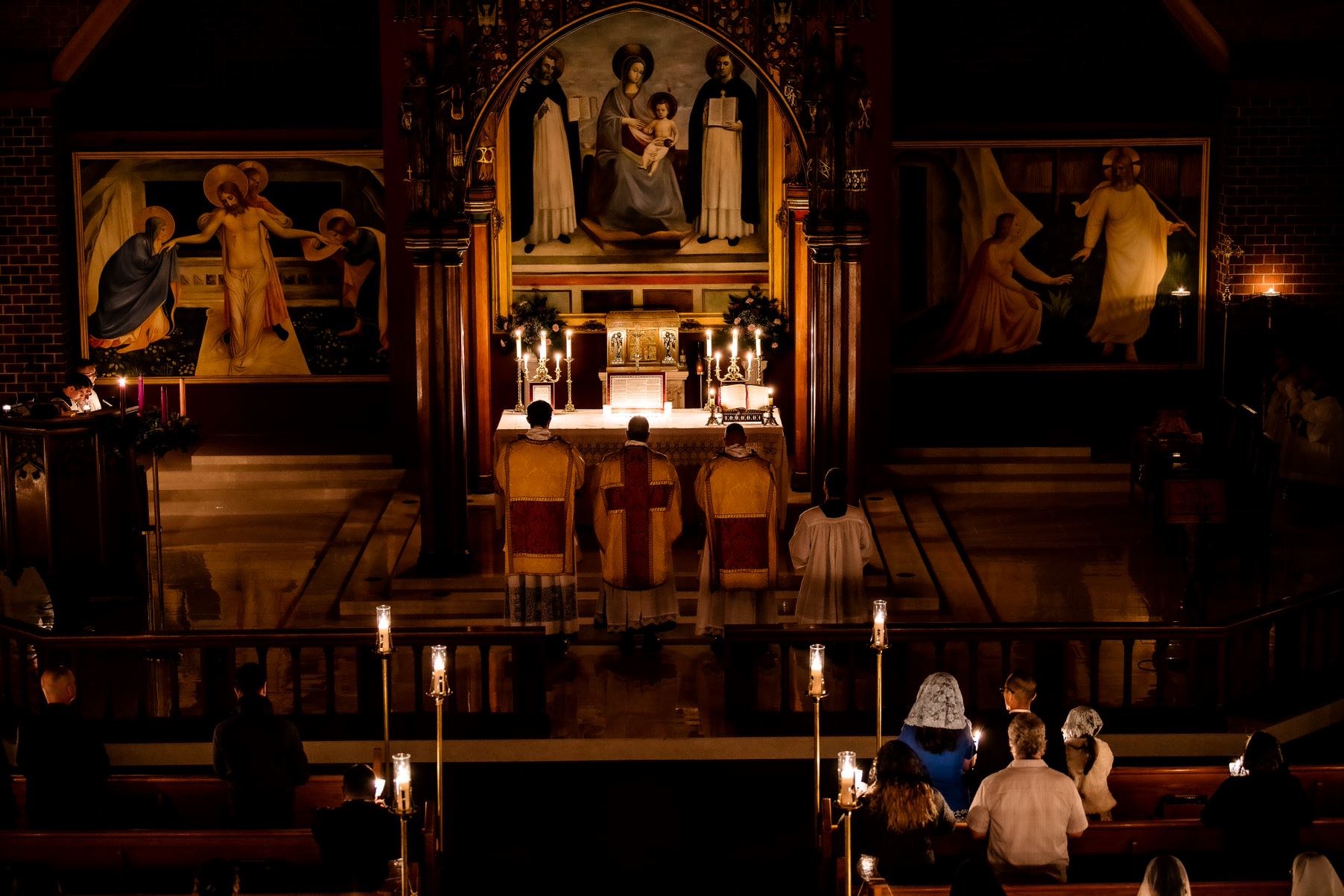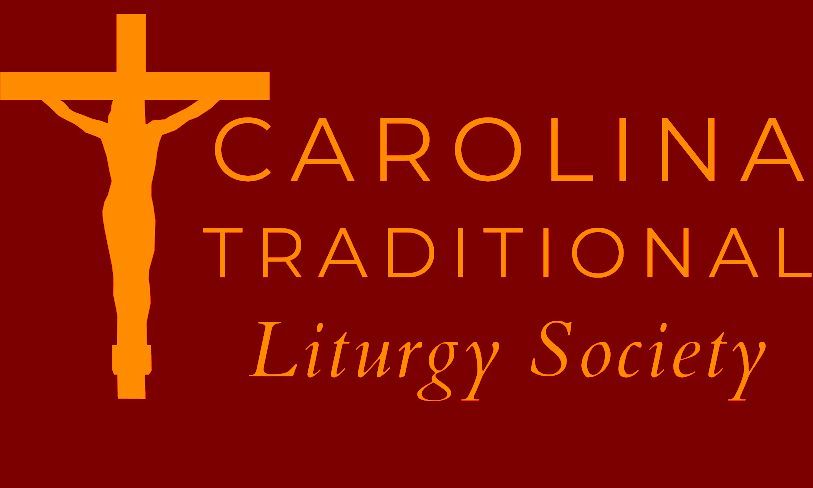Traditional Latin Mass
Questions Answered About Latin Mass!
Will the priest have his back to the congregation?
Yes—but that is the wrong way to think about it. It is not a question of turning his back on the people. Instead, the priest and the people together face the same direction. Masses in which priest and people face a common eastward direction, whether in the Ordinary or Extraordinary Form, are called ad orientem Masses.
Fr. Joseph D. Santos, Jr., a priest of the Diocese of Providence, Rhode Island, gives a straightforward explanation of this traditional practice:
When a general leads his troops into battle, does he face them? When a representative of the people approaches the ruler on their behalf, does he face them? When a priest is going to the Lord on behalf of his people, should he face them? When the priest is acting as the intermediary between the people and God, he faces the altar. When he is dispensing the gifts of God, or speaking to the people, he faces the people. (Interview, Traditional Latin Mass Blog, August 1, 2007)
Scholars have begun to conclude, contrary to popular belief, that Mass facing the people was not in fact the regular practice of the early Church, and that Mass facing east has been the historic norm. "As I have written in my books, I think that celebration turned towards the east, towards the Christ who is coming, is an apostolic tradition," wrote Pope Benedict XVI in 2004, while still Cardinal Joseph Ratzinger (Looking Again at the Question of the Liturgy with Cardinal Ratzinger: Proceedings of the July 2001 Fontgombault Liturgical Conference, 151). In fact, those parts of the early Catholic world in which the sacrificial aspect of the Mass was best understood were most likely to celebrate Mass ad orientem. "The common direction of priest and people is intrinsically fitting and proper to the liturgical action," Cardinal Ratzinger explained (Foreword, Turning Towards the Lord: Orientation in Liturgical Prayer by U.M. Lang).
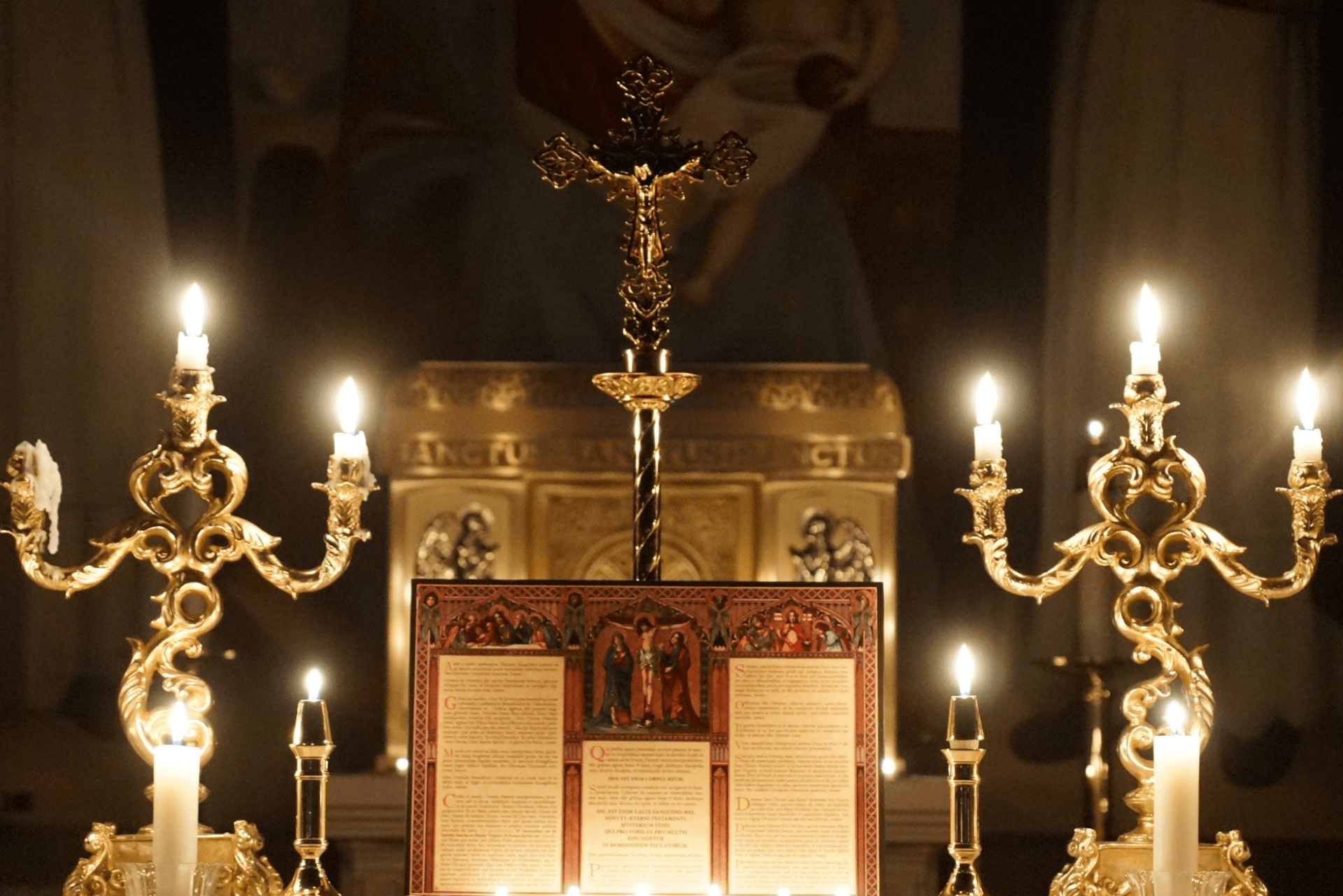
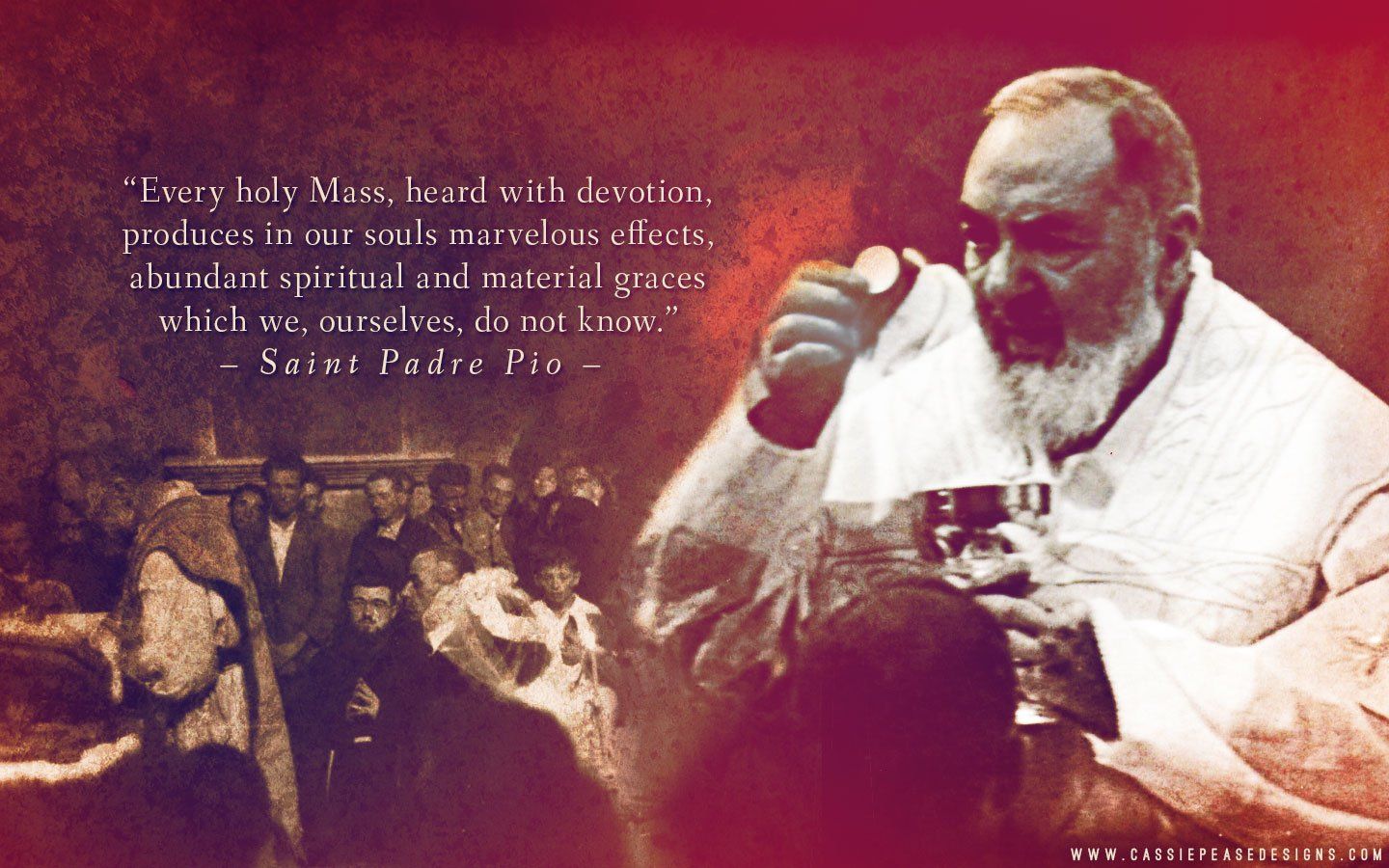
Will I be able to get anything out of it if I don’t speak Latin?
Of course. For centuries the popes insisted on the value of a non-vernacular language for the Mass, and as Catholics we owe them at least the benefit of the doubt that they cared about the spiritual lives of the faithful. It’s easy to follow along in your missal, especially once you’ve attended this Mass a few times. Next to no one spoke Latin in the old days, and yet their souls were deeply nourished by the Mass, and (if polling data is to be believed) they understood the meaning of the Mass far better than do most Catholics today.
It’s important to remember what Pope Bl. John XXIII said about the value of Latin. "The Catholic Church," he explained, "has a dignity far surpassing that of every merely human society, for it was founded by Christ the Lord. It is altogether fitting, therefore, that the language it uses should be noble, majestic, and non-vernacular" (Veterum Sapientia, On the Promotion of the Study of Latin). It makes sense that we should leave behind what differentiates us from each other as Americans, Frenchmen, Koreans, or whatever, and meet for worship in a language that privileges no single group but is the common possession of us all. Just two generations ago, wherever someone went in the world he would encounter the same Mass he knew at home—a beautiful testament to the universality of the Church.
That’s one of the things that so impressed the British communist-turned-Catholic Douglas Hyde, who had looked in vain to secular organizations to give expression to the unity of the human race. In the mid-20th century he found what he was looking for in the Catholic Church, having been especially moved by its use of Latin:
At 11:30 p.m. on Christmas Eve I was twiddling the knob of my radio. Unable to get out to Midnight Mass I wanted at least to bring it to my fireside. And as I switched from one European station to the next I tuned in to one Midnight Mass after the other. Belgium, France, Germany, Eire, yes, even behind the Iron Curtain, Prague. It seemed as though the whole of what was once Christendom was celebrating what is potentially the most unifying event in man’s history. And the important thing was that it was the same Mass. I am a newcomer to the Mass but I was able to recognize its continuity as I went from station to station for it was in one common language. This aspect of Catholicism is but a single one, and maybe not the most important. But I have a strong feeling that it is precisely the Catholicism of the Catholic Church which may prove the greatest attraction, and will meet the greatest need, for my disillusioned generation. (qtd. in Michael J. Miller, "The International and the Introibo: How the Catholic Mass Converted a Communist," Sursum Corda, Winter 1999)
Spiritual Commentary on the Traditional Latin Mass: very helpful for those who have never been, and for those who regularly attend!
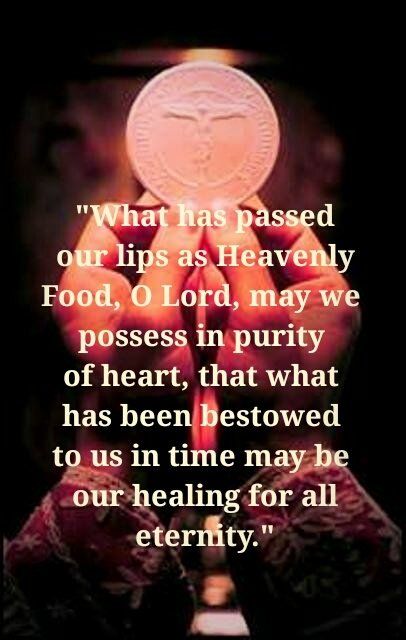
Spiritual Commentary on the Traditional Latin Mass: very helpful for those who have never been, and for those who regularly attend!
Instructional Video on the Traditional Latin Mass, Part 1: Not only explains what the priest is to do, but does so in a detailed way with reasoning behind it.
Instructional Video on the Traditional Latin Mass, Part 2: Continued, from the video to the left.
Instructional Video on the Traditional Latin Mass, Part 3: Continued, from the video on the left.
Principles of Movement and Gesture in the Liturgy: Explanation of some of the basic principles governing movement and gesture when celebrating the Traditional Latin Mass. How to hold one's hands, make the Sign of the Cross, proper tone of voice, bows of the head and body, etc.
Dress, Demeanor, Discipline Show how We Value Holy Mass, by Bishop Robert Vasa
7-Part Series on Liturgy by Fr. Justin Nolan, FSSP
The Traditional Liturgy is Actually Thriving Under Pope Francis by Joseph Shaw
Gestures of Worship; Relearning Our Ritual Language, by Helen Hull Hitchcock
Cardinal Arinze Responds to Questions on the Liturgy
Your Guide to the Latin Mass
Suggestion for Those New to the Latin Mass
Latin Mass Responses
Latin Mass Postures
A Brief History of the Roman Rite
Interview with Dr. Scott Hahn about the Traditional Latin Mass
Audio Talks, Sermons, & Homilies on the Liturgy and more!
Why Do Women Veil?
